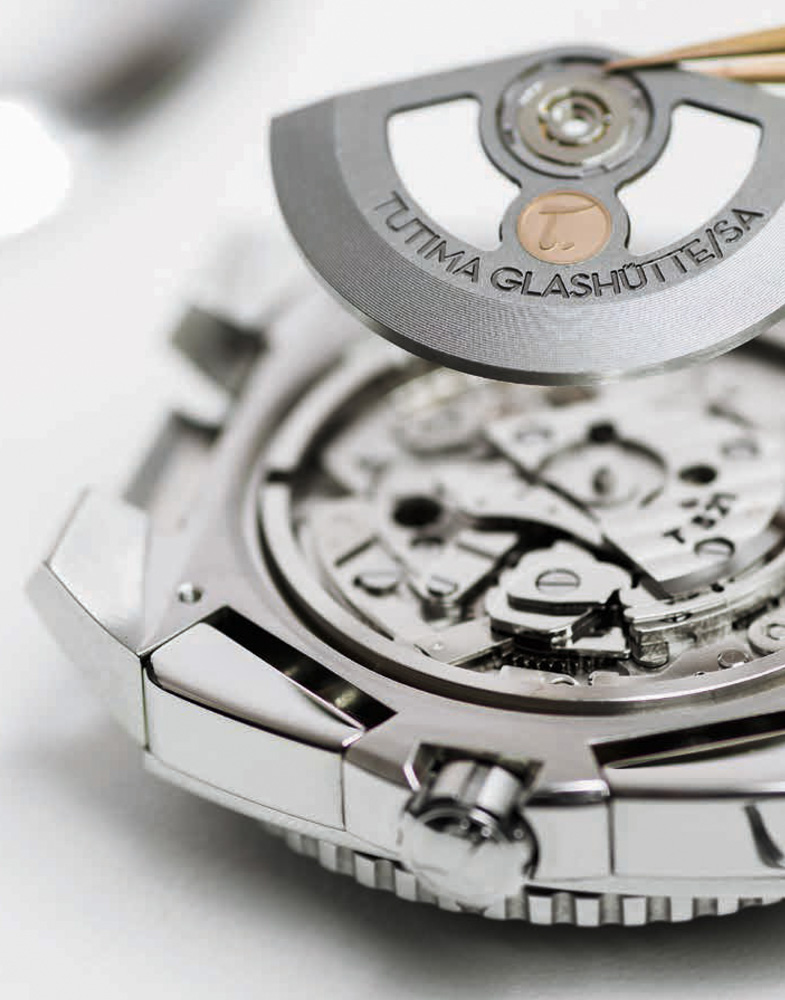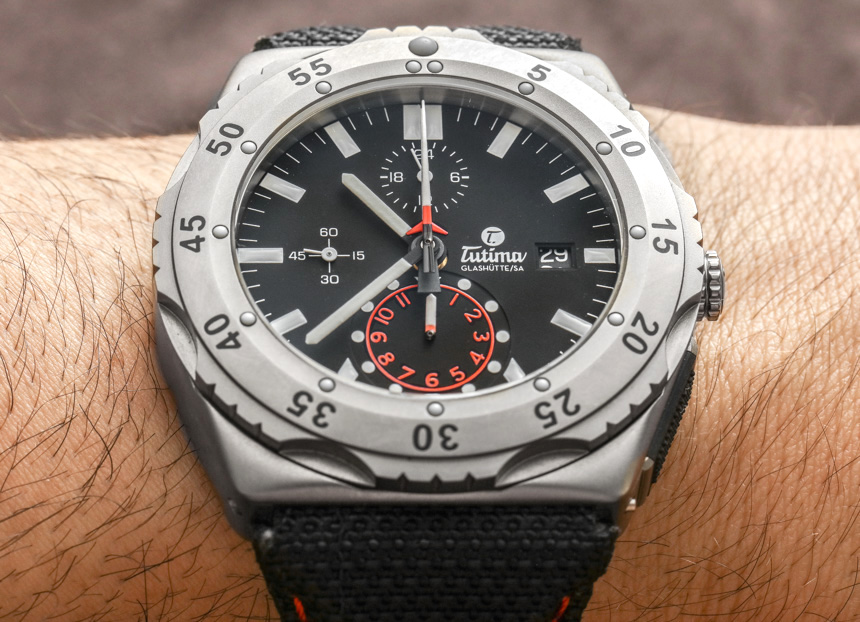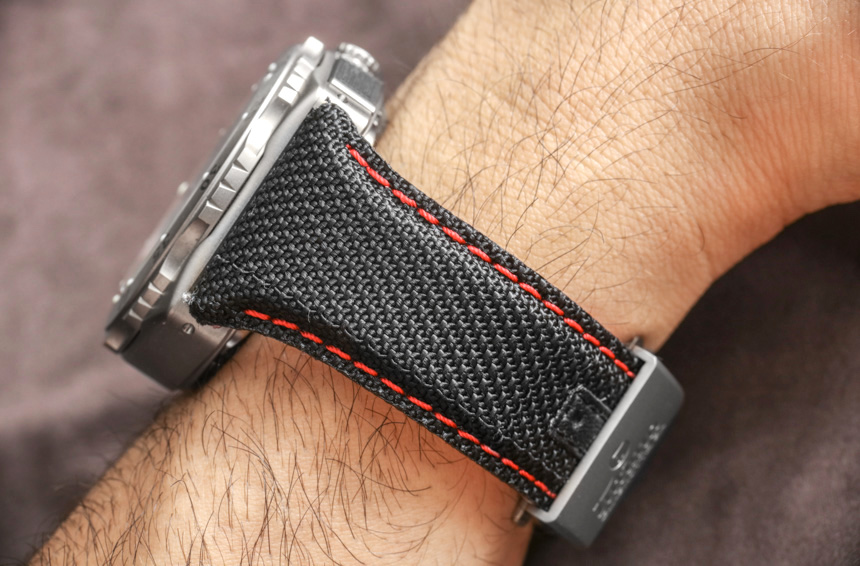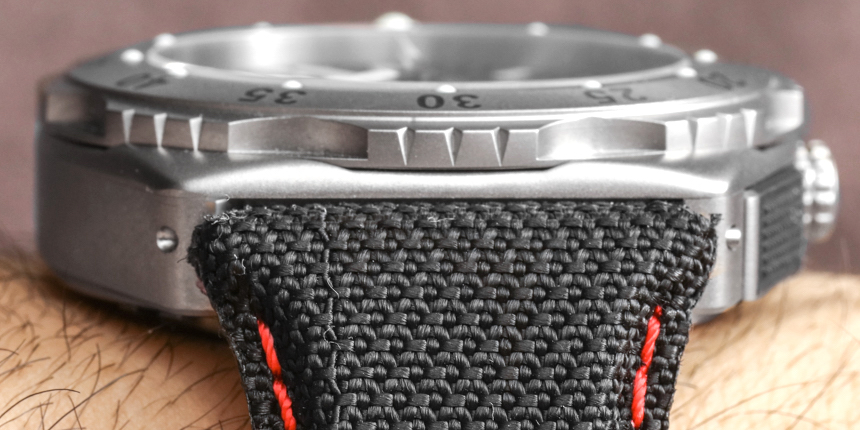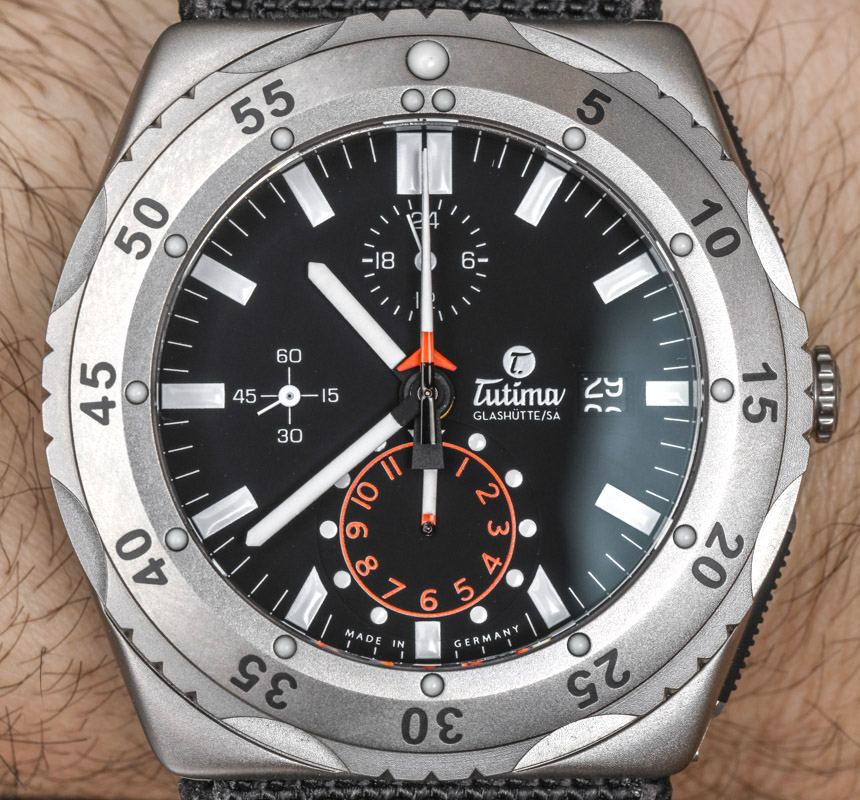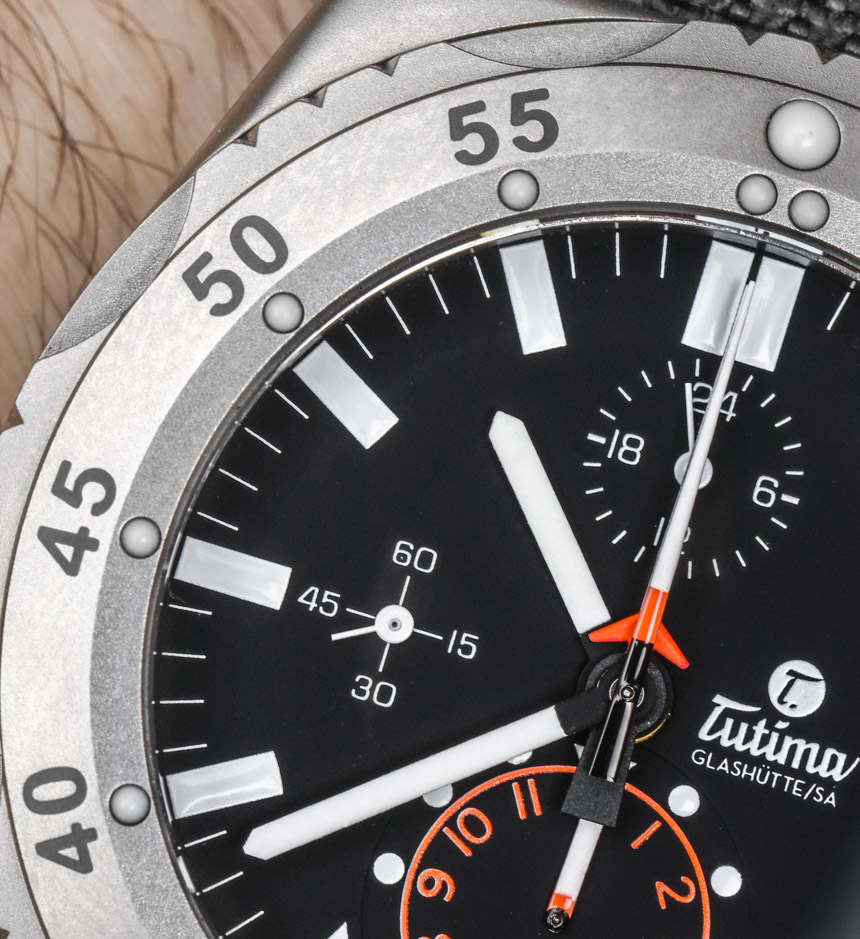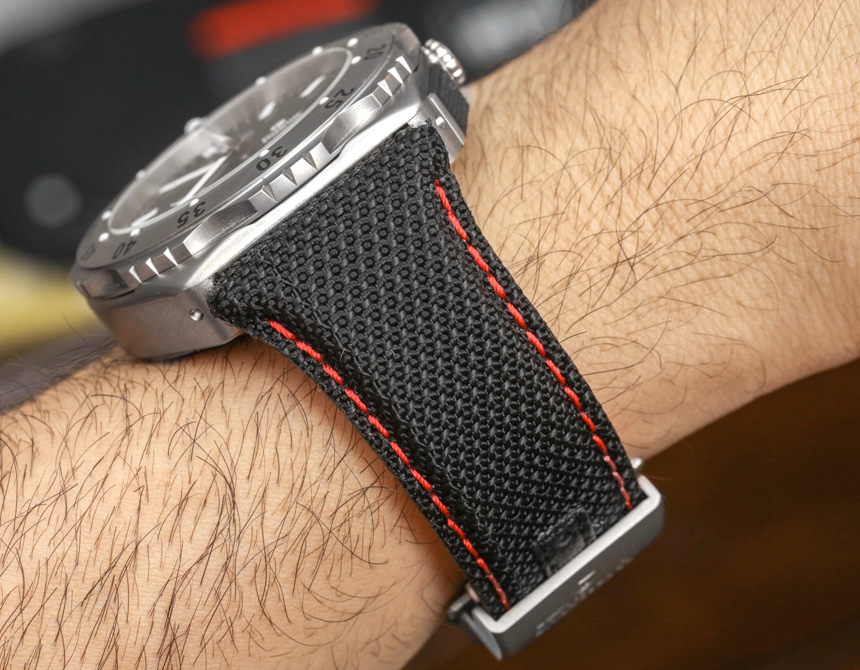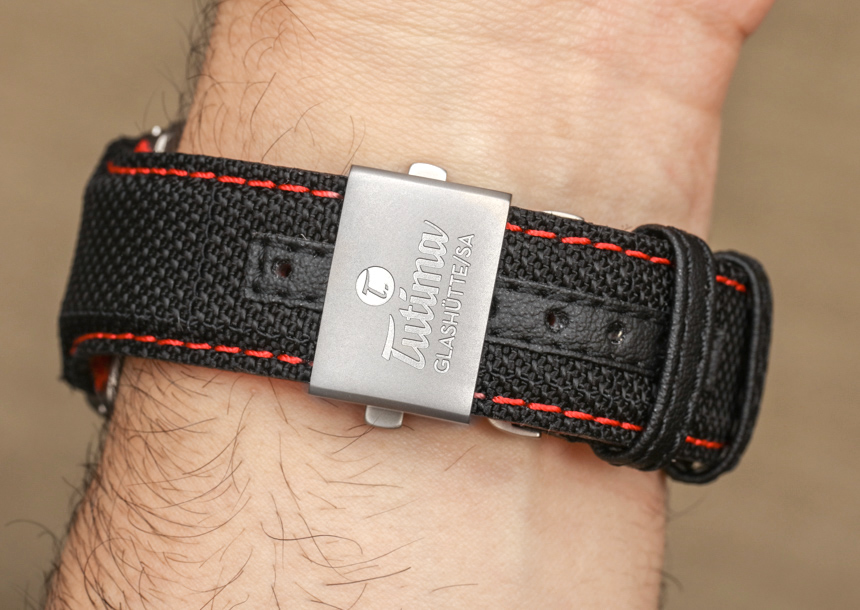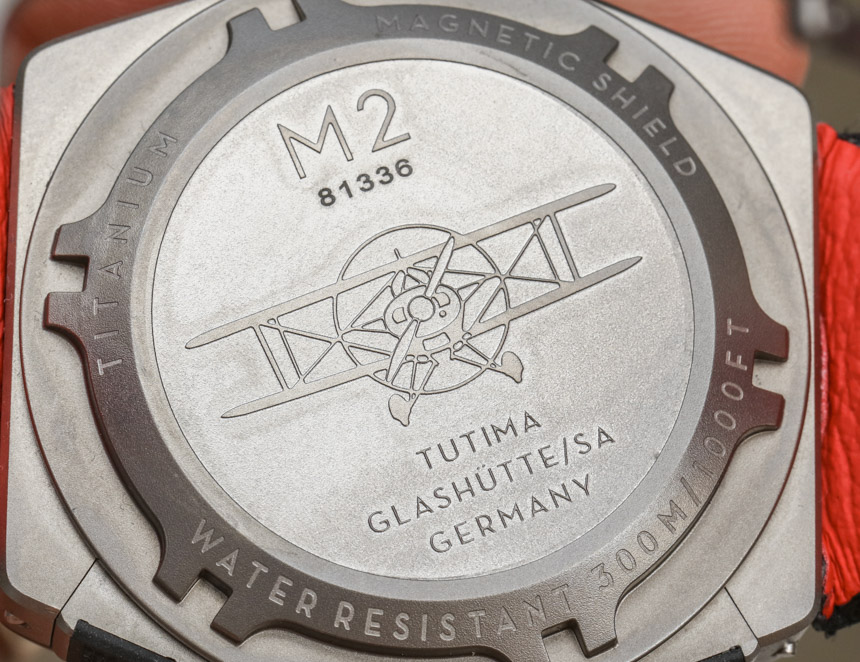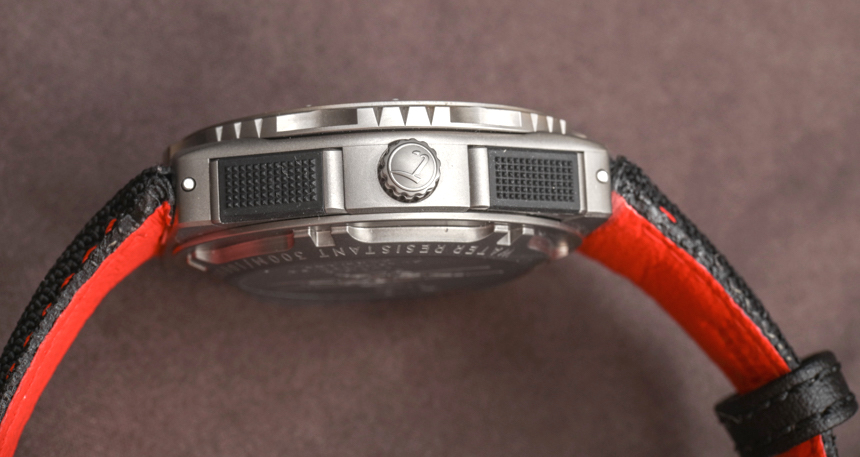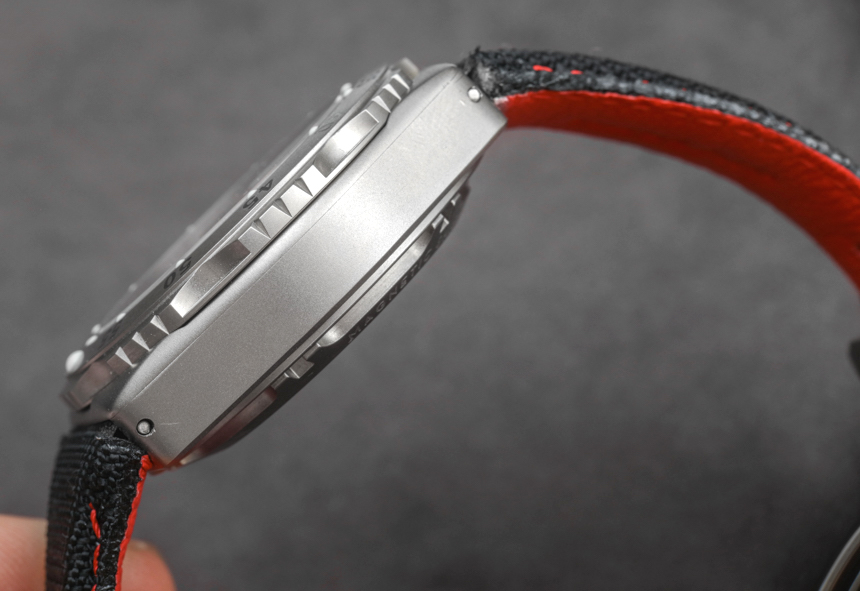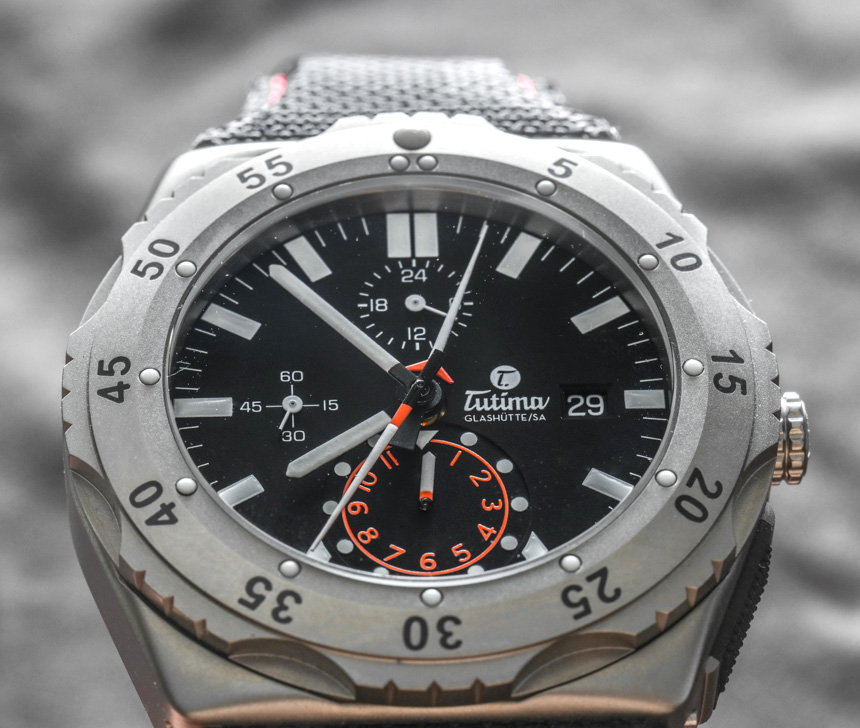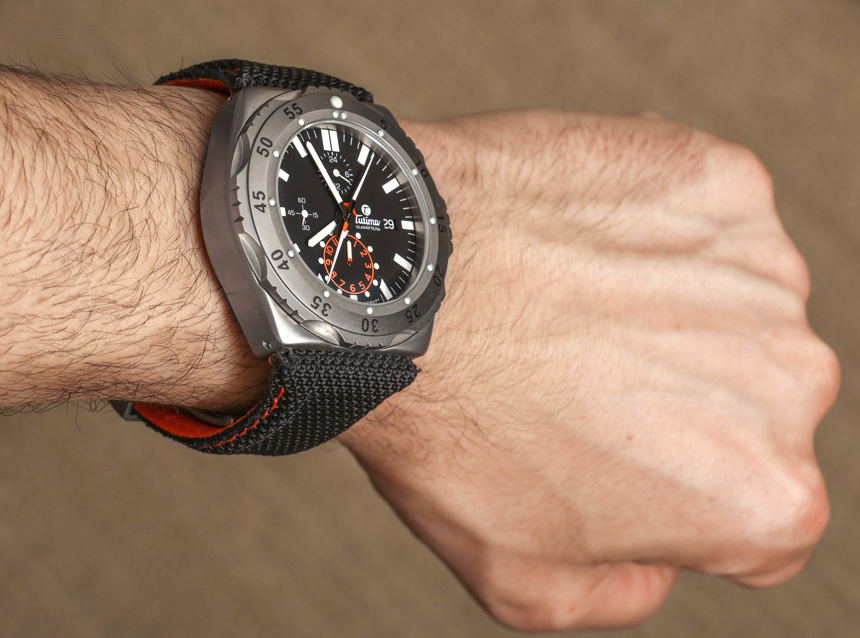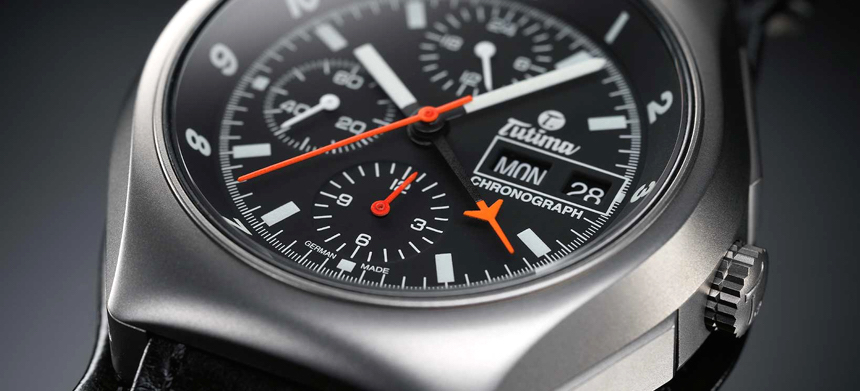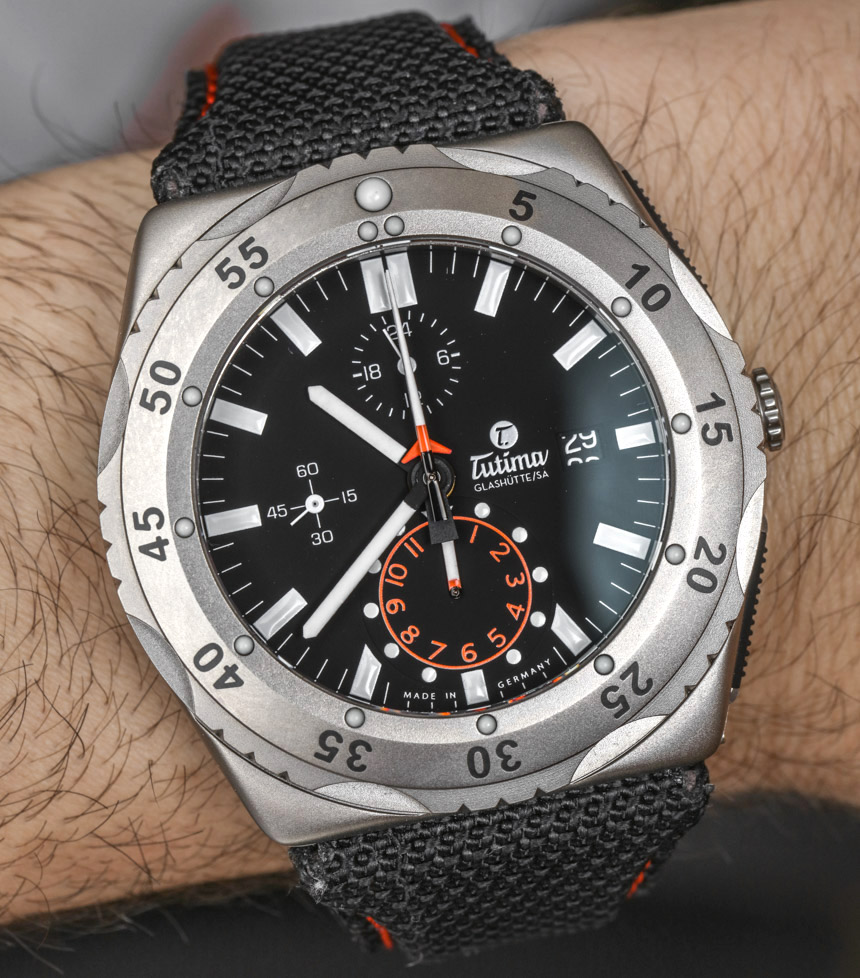
Like the original 1980s models, Tutima designed a curvy, almost tonneau-style case with a round dial. The case is chunky and durable, and produced from sand-blasted titanium. One of the key design elements which I’ve always appreciated is the thoughtfully integrated chronograph pushers which are close to being flush with the case. They look cool and work very nicely. Note the textured black neoprene inserts over the pushers to make them even more comfortable to use.
The crown is naturally protected by being mostly inset into the case when screwed in. It nevertheless has an easy-to-grip surface and little finger nail notches which make it easy to pull out when wanting to adjust the time or manually wind the movement. I should probably point out here that the M2 case is water-resistant to 300 meters – which is pretty good and not that common for chronograph watches.

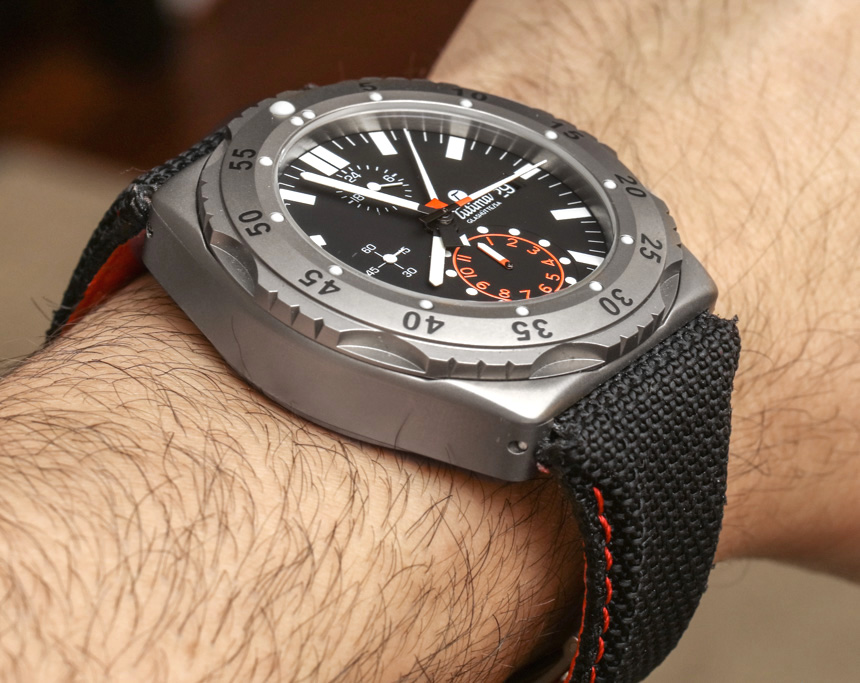
At 46.5mm wide, the Tutima M2’s case is rather large, despite its relatively light weight thanks to the titanium construction. It is also 16mm thick, which is about average for pieces of this type. I wouldn’t say that the watch is too large (as I love the statement it makes), but those with smaller wrists should certainly try one on before making a purchase decision. Moreover, given how the strap connects, I think this particular version on the strap is more suited to larger wrists, whereas the bracelet might slope down a bit sooner for the wearing comfort of smaller wrists.

Only on rare occasions will I actually go into a discussion about a rotating diver-style bezel given that most operate the same way. There isn’t anything functionally unique about Tutima’s bezel on the M2, only that it makes very assuring clicks and operates nice and precisely. It just feels… well, very German-engineered. Unlike most traditional diver-style bezels, it rotates bi-directionally versus uni-directionally (something that I personally prefer). I also rather like that the bezel used a series of lume pips around its periphery and not just at the 60-minute marker. Tutima uses three lume points for that reference point, and a single lume pip at each minute marker point. I don’t recall seeing this on other watches before, and it is a very welcome detail.
While Tutima does not per se indicate the Tutima M2 Pioneer to be a diving watch, it more or less is since you can easily use it for diving purposes. Perhaps more accurately, it is a “go-anywhere military watch,” which is what German brands like Tutima and Sinn are so well-known for making. This has made them fan favorites for anyone who likes a diehard adventure watch that is more interested in being an excellent tool rather than a lifestyle object.

Dial design for the Tutima M2 is deeply Germanic and reminiscent of Teutonic military and sport watches of the last 40 or so years. Richly lumed hands and blocky hour indicators dominate the dial while nothing is left for decorative purposes. Tutima designs the chronograph elements to be red in color, but in a manner so as to enhance the dial with accents versus overpower it with red. A good example of this is how the base of the central chronograph minute and seconds hands are red versus the entire shaft. Further, the base designs are different so as to help the wearer more easily distinguish between the purpose of each of the hands.
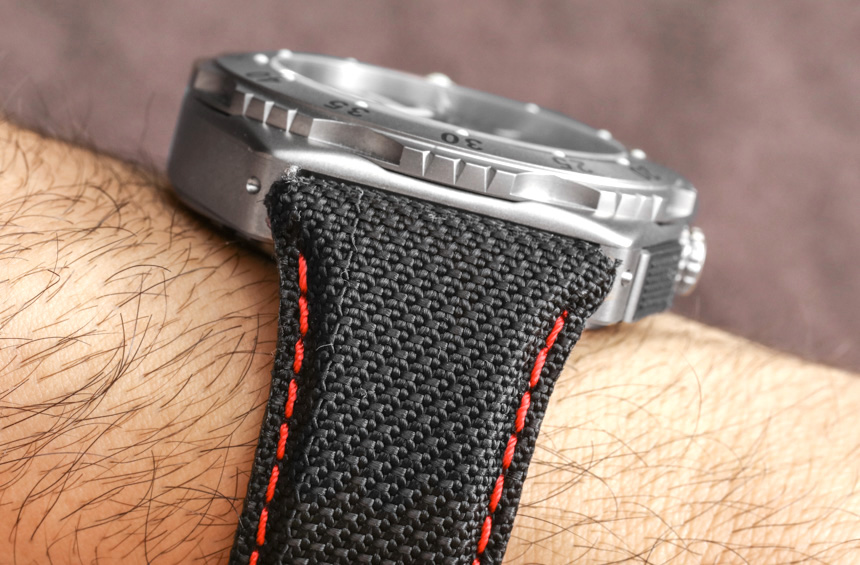
Over the dial is a very well AR-coated flat sapphire crystal that shuns glare like it is prejudiced against it – just the way I like it. I scoff at brands who mention to me that they “intentionally” leave out proper AR-coating since they like their watches to shine a little bit on the wrist. That’s just lazy design and ill-suited for an item on the wrist with a dial meant to be easily viewed by the wearer. Glare-filled dials easily signify that the brand simply doesn’t care about functionality enough and thinks its buyers are all “lifestyle seekers.” Ask for a discount on those watches since there is a clear design defect.
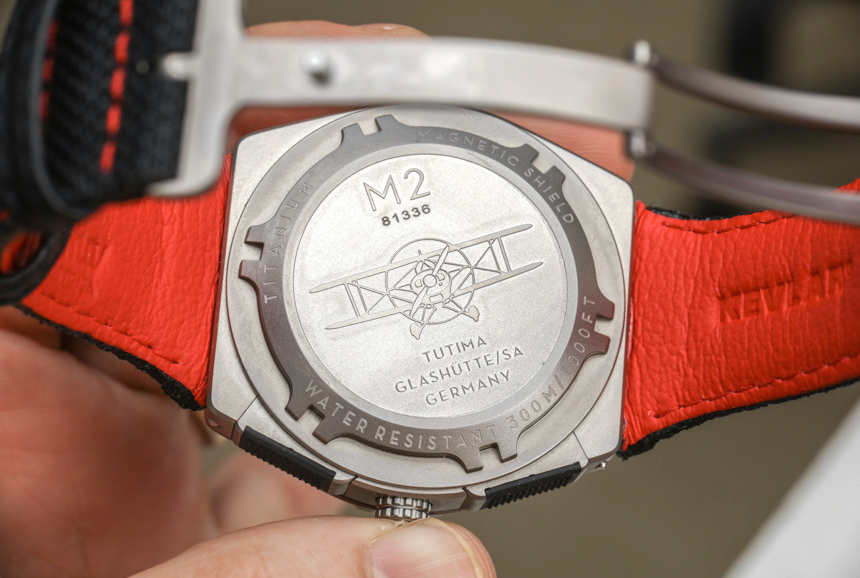
On the rear of the Tutima M2’s case is the front view of a biplane which coincidences with Tutima’s history but feels a bit out of place on this watch which is inspired by, albeit older watches, but ones that were used during the age of jet engines. Its an attractive motif, but it feels better suited to the brand’s Grand Flieger collection. I’d prefer a NATO tank or perhaps even something like a helmet – which is an equally tough and personal item just like a watch (hey, assuming the right hit, the watch might even save your wrist from flying shrapnel).
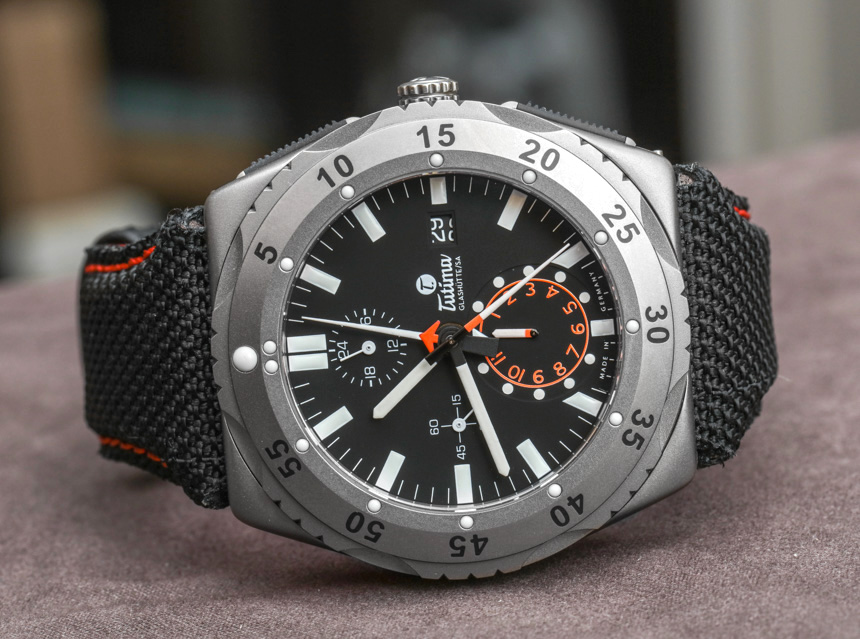
In a time when world military conflict is anything but modest in scope, I feel that the military watch will be making a serious comeback sooner rather than later. Such models are already beloved by niche collectors, but just as the pilot, diving, and driving watch all have their major roles in “high-end watch lifestyle,” the military watch is bound to become more fashionable. That will make brands like Tutima even bigger heroes of the watch world, but we will see what the years have in store for us. Whatever future trends may hold, I nevertheless feel safe in knowing that Tutima won’t get caught up in it, and will continue to produce solidly made, function-focused tool watches with charm and spirit. Price isn’t class-leading, but you do have a very well-made machine, and it doesn’t have a lot of competition with an in-house made movement – overall a solid buy for those who connect with the design and story.
Price premium for the Tutima M2 Pioneer with the rotating bezel isn’t that much over the Tutima M2 without it. The former costs $5,900 and $6,500 on the Kevlar strap or titanium bracelet, respectively; and the Tutima M2 Pioneer is priced just $200 more at $6,100 and $6,700 on the Kevlar strap or titanium bracelet. tutima.com
Necessary Data
>Brand: Tutima
>Model: M2 (M2 Pioneer reference 6451-02 as tested)
>Price: $6,100 USD as tested
>Size: 46.5mm wide by 16mm thick
>Would reviewer personally wear it: Yes.
>Friend we’d recommend it to first: German military watch lover looking for a modern take on a classic design with a function-first attitude and an in-house movement.
>Best characteristic of watch: Tutima was able to re-invigorate a classic with their modern in-house movement while at the same time not taking away appeal from older models – a tough task, to be sure. Purposeful dial and bezel design is most appreciated, and overall build quality is what you’d expect from a German machine.
>Worst characteristic of watch: Slight price premium for in-house movement makes the Tutima M2 a bit more niche than some of the competition. Wears a bit larger than some wrists can accommodate.

